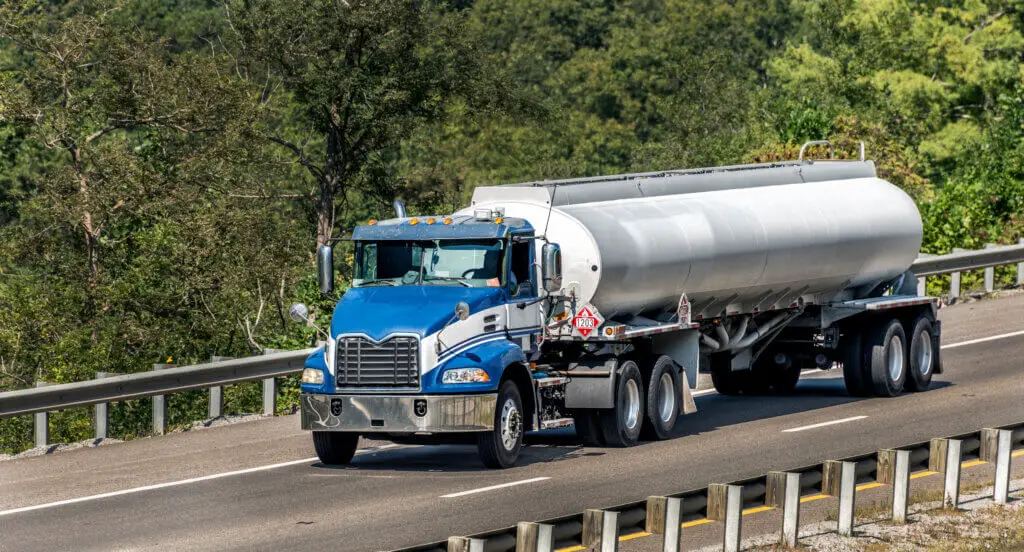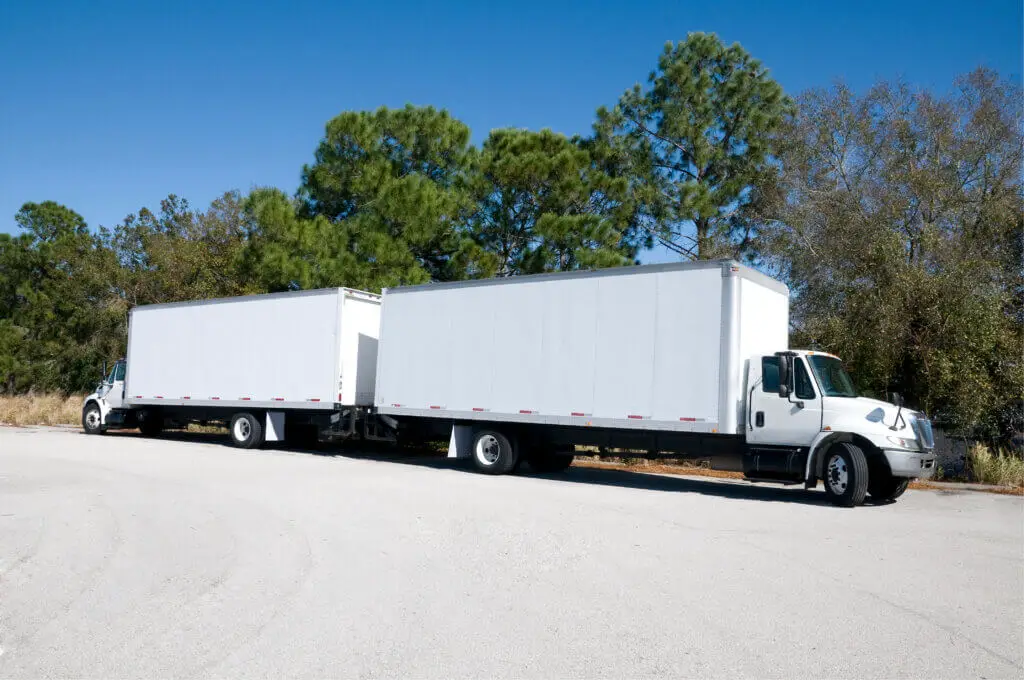As a truck driver, obtaining a Commercial Driver’s License (CDL) is just the beginning of your journey. In addition to the CDL, there are also CDL endorsements that you can obtain to expand your driving abilities and enhance your job opportunities.
This article will explore CDL endorsements, including what they are, the types available, how to obtain them, and common mistakes to avoid. Let’s dive straight in.
CDL Endorsements: What They Are

CDL endorsements are specialized certifications that drivers can obtain in addition to their CDL. These endorsements indicate that a driver has passed a written test and/or a skills test that demonstrates their ability to safely operate specific types of commercial vehicles or transport particular types of cargo.
CDL endorsements can increase a driver’s job opportunities and earning potential. Employers are often willing to pay a higher rate for drivers with endorsements because they have the skills and knowledge needed to operate specialized vehicles or transport specific types of cargo. Additionally, some companies may require drivers to have specific endorsements before they can be hired for certain jobs.
Endorsements can also give drivers a competitive edge when applying for jobs. With the increasing demand for qualified commercial drivers, having endorsements on your CDL can set you apart from other applicants and make you a more attractive candidate.
Moreover, obtaining endorsements demonstrates a driver’s commitment to professional development and safety. By investing time and effort in getting endorsements, drivers can show their dedication to their profession and their desire to improve their skills and knowledge.
How Many CDL Endorsements are there?
If you’re interested in pursuing a career in truck driving, then obtaining a Commercial Driver’s License (CDL) is essential. However, a CDL alone may not be enough to qualify you for certain specialized driving positions. That’s where CDL endorsements come in.
There are six types of CDL endorsements: H, N, P, S, T, and X. Each endorsement indicates that a driver has passed additional testing and meets specific qualifications for driving certain types of vehicles or cargo. Let’s take a closer look at each endorsement:
H Endorsement

The H endorsement, also known as the hazardous materials endorsement, is required for drivers transporting hazardous materials. This endorsement is necessary for drivers transporting any hazardous materials that need placarding. Some common examples of hazardous materials include gasoline, explosives, and corrosive materials.
To obtain the H endorsement, you must pass a written test that covers the Federal Motor Carrier Safety Administration’s (FMCSA) regulations regarding the transportation of hazardous materials. You will also need to undergo a security threat assessment conducted by the Transportation Security Administration (TSA). The security threat assessment ensures you do not pose a security risk when handling hazardous materials.
N Endorsement
The N endorsement is required for drivers who transport tank vehicles. A tank vehicle is any commercial motor vehicle designed to transport liquid or gaseous material within a tank that is either permanently or temporarily attached to the vehicle or the chassis.

To obtain the N endorsement, you must pass a written test that covers the FMCSA’s regulations regarding the transportation of tank vehicles. You must also pass a skills test in a tank vehicle, which includes a pre-trip inspection, a basic vehicle control test, and an on-road test.
P Endorsement

The P endorsement is required for drivers who operate passenger-carrying vehicles. This endorsement is necessary for drivers who operate vehicles designed to transport 16 or more passengers, including the driver. Vehicles requiring the P endorsement include buses, vans, and limousines.
You need to pass a written test on the FMCSA’s regulations for passenger transportation to get the P endorsement. You must also complete a passenger-carrying vehicle skills test, which entails a pre-trip inspection, a test of fundamental vehicle control, and an on-road test.
S Endorsement
The S endorsement is required for drivers who operate school buses. This endorsement is necessary for drivers using a school bus to transport students to or from school or school-related events.
You need to pass a written test on the FMCSA’s guidelines for school bus transportation to get the S endorsement. Additionally, you must complete a school bus skills test, which entails an on-road test, a pre-trip inspection, and a test on basic vehicle control.
T Endorsement

The T endorsement is required for drivers who operate double or triple trailers. This endorsement is necessary for drivers who operate a commercial motor vehicle that is pulling two or three trailers.
You must pass a written test on the FMCSA’s guidelines for driving double- or triple-trailers to acquire the T endorsement. A pre-trip inspection, a basic vehicle control exam, and an on-road test are required for the skills test in a commercial vehicle carrying two or three trailers.
X Endorsement
The X endorsement is required for drivers who transport hazardous materials and must obtain a placard for the vehicle they are operating.
To obtain the X endorsement, you must pass both the H and N endorsement tests.
Importance of Understanding Each Endorsement
Understanding the different types of CDL endorsements and the qualifications required to obtain them is essential for every truck driver. With the right endorsement, you can operate a specific vehicle or carry a particular type of cargo safely and legally.
Moreover, some endorsements are mandatory in certain states, while others are not. For instance, if you want to transport hazardous materials, you’ll need to obtain an H endorsement. Similarly, if you’re planning to drive a school bus, you’ll need to have a P endorsement.
The proper endorsement can also lead to better job opportunities and higher pay rates. Employers often require their drivers to have specific endorsements, and they’re willing to pay more for the added skills and knowledge that come with those endorsements. So, if you want to increase your earning potential and advance your career as a truck driver, obtaining endorsements can be a valuable investment.
Understanding the requirements for each endorsement can also help you prepare for the exams and ensure that you have the qualifications to obtain them.
Some endorsements may require additional training or experience, and others may have age restrictions. Knowing the details beforehand can help you plan your career path and avoid wasting time or money on endorsements you’re not eligible for.
How to Obtain CDL Endorsements
To obtain CDL endorsements, you must meet the following basic requirements:
- Hold a valid commercial driver’s license (CDL)
- Be at least 21 years old for some endorsements
- Meet any additional requirements specific to the endorsement you are seeking
To prepare for the CDL endorsement exam, you should study the appropriate sections of the CDL manual, which can be found on the website of your state’s Department of Motor Vehicles (DMV). You can also find practice tests and study guides online, which can help you familiarize yourself with the questions on the exam.
Additionally, you may consider taking a CDL endorsement course to help you prepare for the exam. These courses can be found at truck driving schools, community colleges, and other institutions.
Once you feel confident in your knowledge of the endorsement, you can schedule an appointment to take the exam at your state’s DMV. The exam typically consists of a written test and/or a skills test, depending on the endorsement you are seeking.
During the written test, you will be asked multiple-choice questions about the specific endorsement you are seeking. The skills test, if required, will test your ability to operate a commercial vehicle that requires the endorsement.
It’s important to arrive at the DMV prepared and on time for your exam. Bring all necessary documentation, such as your CDL and identification, and be prepared to pay any fees required for the exam.
Renewing and Maintaining Endorsements
Renewing and maintaining CDL endorsements is an essential aspect of being a professional truck driver. It is important to remember that each endorsement has its expiration date, and it’s your responsibility to keep them current. Failing to renew your endorsements can lead to a suspension of your CDL, which can be detrimental to your career.
To renew your endorsement, you must pass the appropriate knowledge or skills test again, depending on the endorsement you hold. The renewal process is similar to the initial process of obtaining the endorsement. You will need to provide proof of your identity, residency, and citizenship, as well as pass a vision test.
In addition to renewing your endorsements, you also need to maintain them. This means staying up to date with any changes in regulations or requirements. The trucking industry is constantly evolving, and it’s important to keep up with any changes that may affect your endorsements.
One way to stay informed about regulation changes is to attend regular training sessions. Many employers offer training programs to help drivers maintain their endorsements and stay updated with new rules and regulations.
It’s also essential to continue educating yourself about your specific endorsement. This can be achieved through online resources, industry publications, and networking with other drivers with the same endorsement. By continually improving your skills and knowledge, you will not only maintain your endorsements but also enhance your job prospects.
Common Mistakes to Avoid When Obtaining CDL Endorsements
Obtaining these endorsements can be challenging and confusing, especially for new drivers. One of the most common mistakes that drivers make is not studying for the endorsement exams.
To obtain a CDL endorsement, drivers are required to take an exam that tests their knowledge of specific driving skills and safety practices. Without proper preparation and studying, it is easy to fail the exam and miss out on valuable job opportunities. It is essential to study the CDL handbook and other materials provided by the Department of Transportation (DOT) to prepare for the endorsement exams.
Another common mistake is not understanding the endorsement requirements. Each endorsement has specific requirements that drivers must meet to obtain them. For example, the Hazardous Materials (H) endorsement requires drivers to pass a background check and complete a training course. Without meeting these requirements, drivers cannot obtain the endorsement.
It is also crucial to maintain endorsements once they are obtained. CDL endorsements are not permanent, and drivers are required to renew them regularly. Failing to maintain endorsements can result in losing driving privileges, fines, and even job loss. Therefore, drivers should keep track of their endorsement expiration dates and renew them before expiration.
Preparing for endorsement exams in advance is another common mistake that drivers make. Some drivers wait until the last minute to prepare for the exam, leading to stress and anxiety. To avoid this, drivers should give themselves enough time to study and prepare for the exam. Taking practice tests and seeking guidance from experienced drivers can also help improve exam performance.
Lastly, not seeking help and guidance from experienced drivers or trainers is a common mistake for new drivers. Professional drivers and trainers can provide valuable insights and advice on obtaining and maintaining CDL endorsements. They can also offer guidance on how to prepare for the endorsement exams and share their own experiences of obtaining endorsements.
Wrapping Up
As we have seen, there are six types of CDL endorsements, each with its own requirements, testing procedures, and benefits. It is essential to understand the significance of each endorsement and determine which ones align with your career goals.
If you are interested in pursuing truck driving or expanding your career options, obtaining CDL endorsements is a necessary step. By obtaining endorsements, you will be more attractive to potential employers, and you will also have more opportunities to earn a higher salary.
We recommend that you take the time to research and prepare for your CDL endorsement exams thoroughly. The process can be rigorous and time-consuming, but it is worth the effort.
